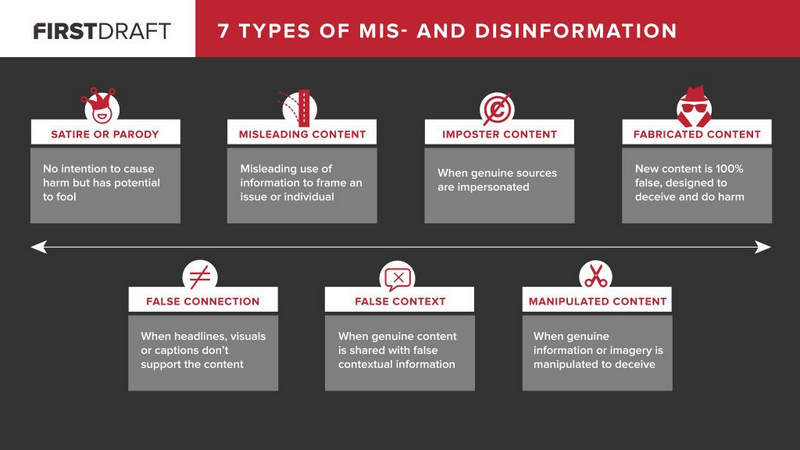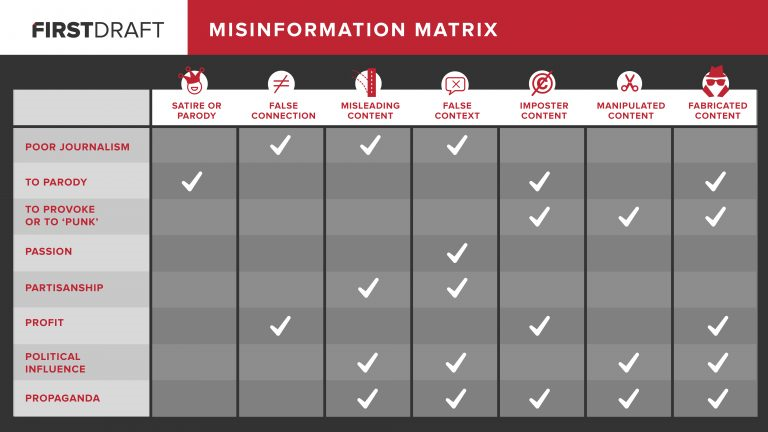Disinformation & Misinformation
Revised 1 February 2023
Misinformation is false or inaccurate information that is mistakenly or inadvertently created or spread; the intent is not to deceive. Disinformation is false information that is deliberately created and spread in order to influence public opinion or obscure the truth. “Fake news” are news stories that are false and these stories are fabricated with no verifiable facts of citations of sources. In recent decades, fake news stories have proliferated via social media, in part because they are so easily and quickly shared online.
According to Claire Wardle of First Draft News, in order to understand and combat misinformation and disinformation, we first need to break down the following three elements:
1. The different types of content that are being created and shared.
2. The motivations of those who create this content.
3. The ways this content is being disseminated.
Claire Wardle of has identified 7 types of misinformation and disinformation as follows:

The following matrix shows the extent that authors of misinformation with different motivations and intent make use of the above types of misinformation.

There are three basic principles which can be followed to combat misinformation and disinformation.
1. Read widely including information from many points of view.
2. Apply critical thinking.
3. Do not share news articles which you have not read with a critical eye.
Additional Reading
Oreskes, N. and E.M. Conway. Merchants of Doubt: How a Handful of Scientists Obscured the Truth on Issues from Tobacco Smoke to Global Warming. London, Bloomsbury, 2010.